 To the buddhists, the lotus is a symbol of purity and transcendence: its feet bathe in the muddy bottom of the pond while its flowers and often leaves, too, rise into the pure air above it all. It is a reminder that one can have one’s roots entangled in mud and mess while still keeping a clear and pure mind above it all.
To the buddhists, the lotus is a symbol of purity and transcendence: its feet bathe in the muddy bottom of the pond while its flowers and often leaves, too, rise into the pure air above it all. It is a reminder that one can have one’s roots entangled in mud and mess while still keeping a clear and pure mind above it all.
As I walked around the botanical gardens of Bologna I thought of how my own feet were currently so deeply embedded in the mud and mess and madness of this world. And how it seemed that the level of mud was rising dangerously close to my head. With honesty to myself I admitted that my head was probably already covered in spatters of mud, messing with my mind.
It is easy to see one is messed up. It is much more difficult to pinpoint how, and what to do about it. I almost wrote “and how to get out”, but really, getting out never helps. It is all about getting in, and working it out from the inside.  This year I have been following a personal development plan which revolves around identifying negative energy inside and around me. One of its action points is to repeat to myself when needed, “I am not my emotions”. I have found myself repeating this mantra over and over again these past few months. Another action point is to KonMari incoming energies, impressions, and matters: sort them at the door and not letting every single one in. And if needed, put the newcomers in separate rooms, close the doors, and deal with them later. I have found that my mental rooms are nearing overcrowded.
This year I have been following a personal development plan which revolves around identifying negative energy inside and around me. One of its action points is to repeat to myself when needed, “I am not my emotions”. I have found myself repeating this mantra over and over again these past few months. Another action point is to KonMari incoming energies, impressions, and matters: sort them at the door and not letting every single one in. And if needed, put the newcomers in separate rooms, close the doors, and deal with them later. I have found that my mental rooms are nearing overcrowded.
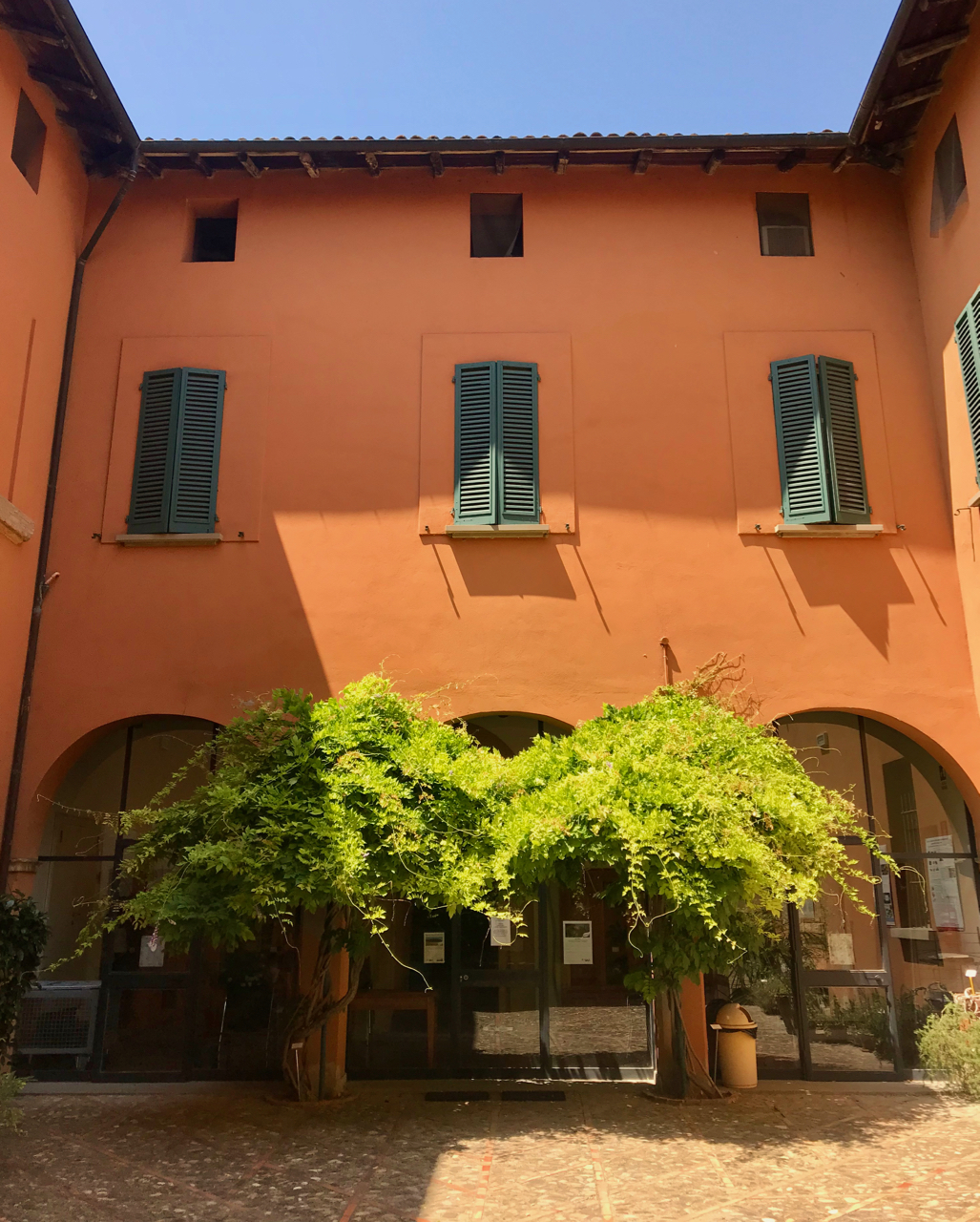 Robin Sharma says that because a lifetime is precious and finite, there is no time for negative emotions. At all. That thinking a negative thought is to waste the time it takes to think that thought. This may sound like a highly platonically theoretic view, but when I think of all the time I spent dealing with negative emotions the past year I could probably amass a few weeks of life better spent doing other things. For example fully enjoying the botanical gardens of Bologna.
Robin Sharma says that because a lifetime is precious and finite, there is no time for negative emotions. At all. That thinking a negative thought is to waste the time it takes to think that thought. This may sound like a highly platonically theoretic view, but when I think of all the time I spent dealing with negative emotions the past year I could probably amass a few weeks of life better spent doing other things. For example fully enjoying the botanical gardens of Bologna.
A dear friend once criticized me for being too solution-oriented. For offering my help in solving a problem when she would rather just wallow and swim in it for some time, until perhaps a solution slowly emerged. She gently told me that not all people want help, because not all things can be helped. Her words hurt me so much that I could not bear to spend time with her for two years. Some years ago I learned that not all problems can be solved. Not immediately, and perhaps not ever. Accepting the company of a deep injury for the rest of my life was possibly the toughest lesson I have learned in life so far.
And so I continue to trudge on through this life with my feet in the mud. As long as I remember to stretch upwards into the clean air, keeping my head relatively pure and sane like the lotus, I will be alright.  (Bologna, Italy; July 2019)
(Bologna, Italy; July 2019)





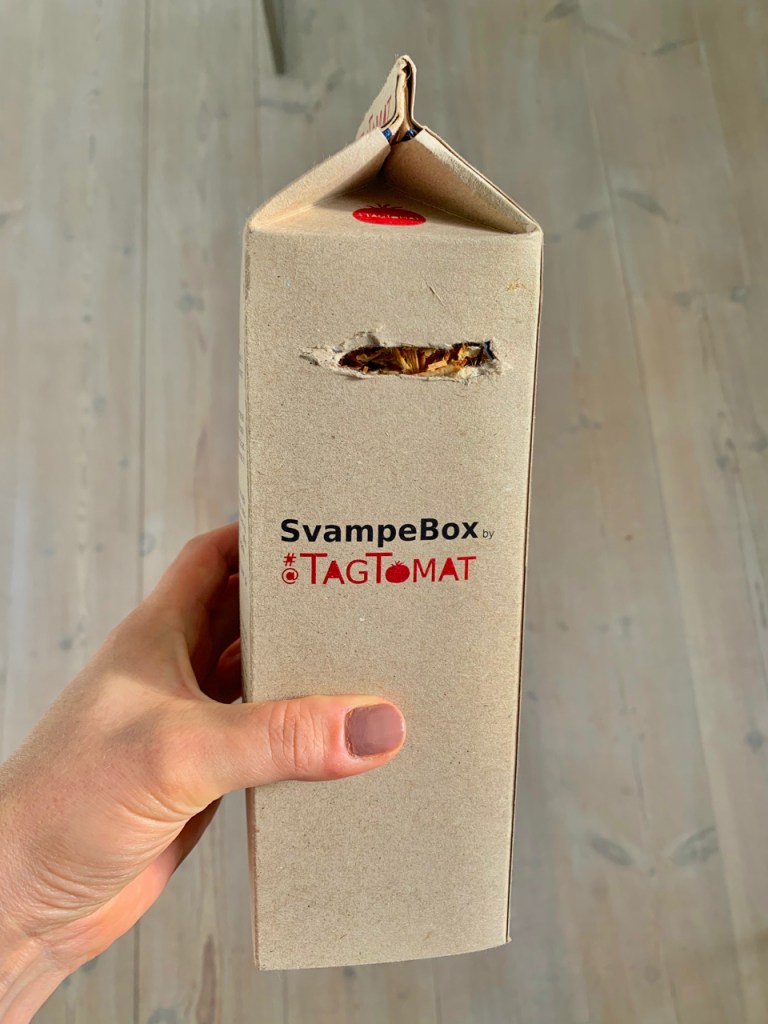

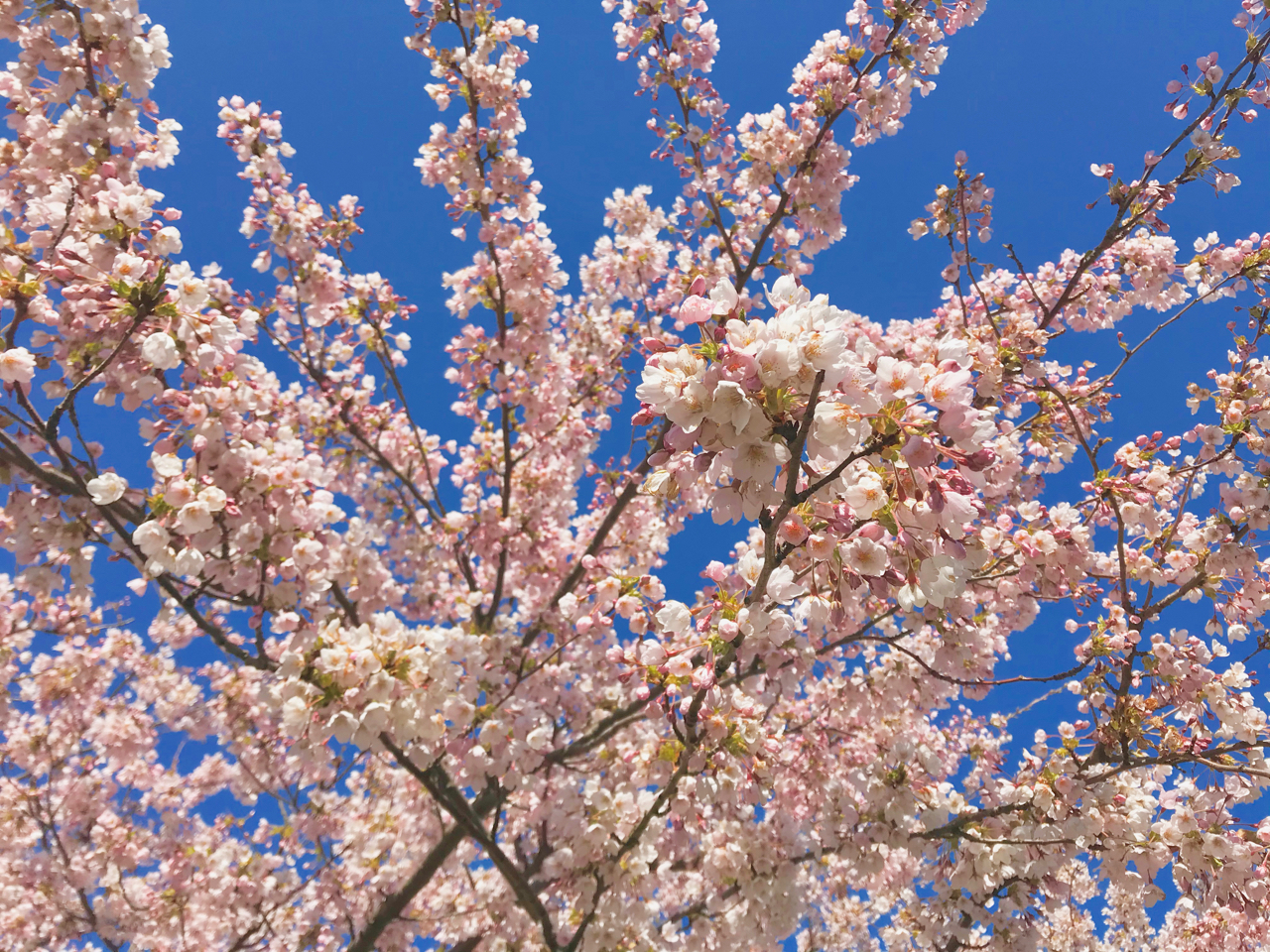

 (Copenhagen, Denmark; April 2020)
(Copenhagen, Denmark; April 2020)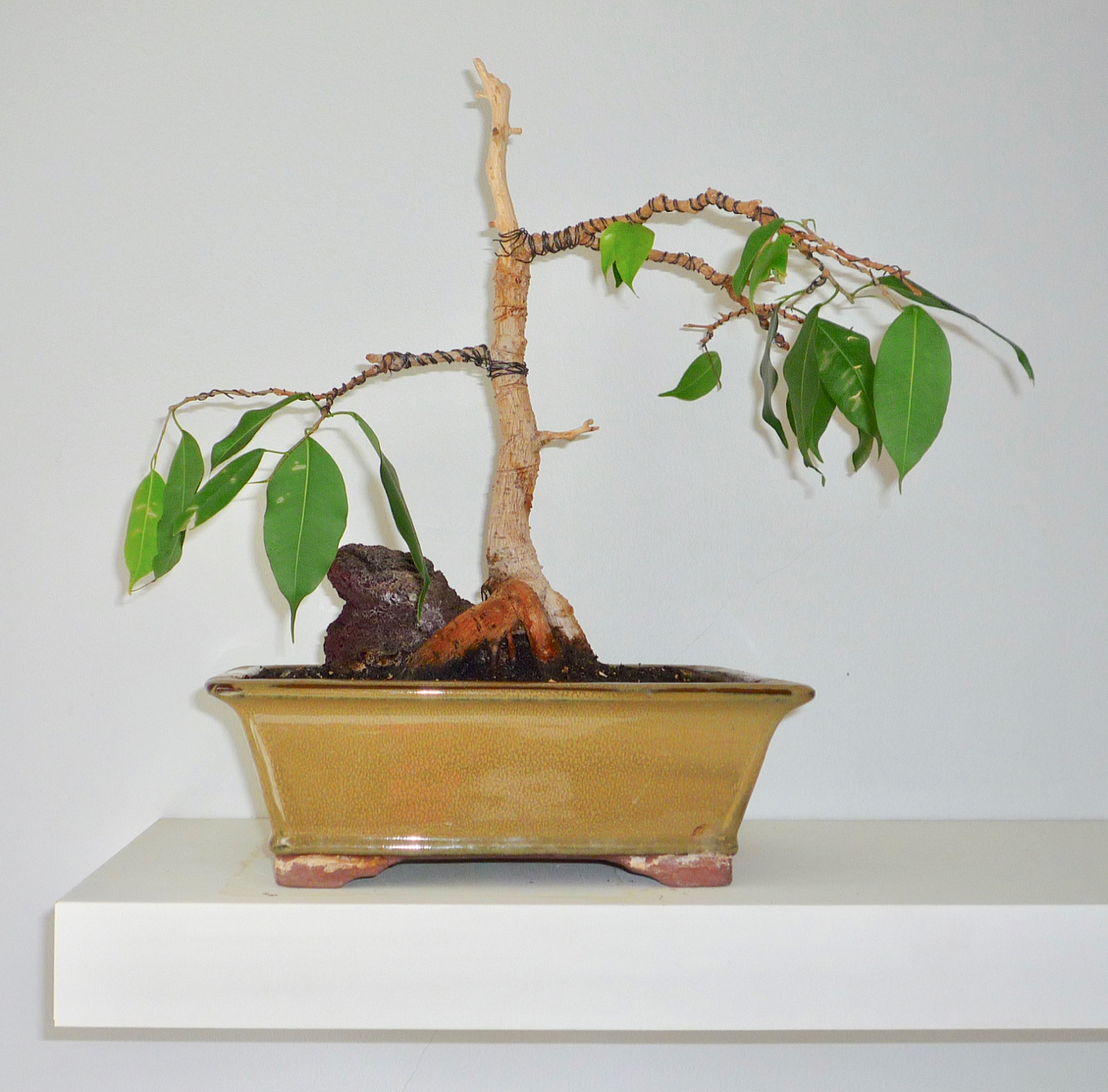 Some plants become lifelong friends. Like the weeping fig I grew from a cutting from my mother’s tree when I was 17, wrapped around a rock, and grew into a bonsai tree. It has moved to Holland and back with me, and it made it to Denmark a year after I did. It looks a bit funky today as its apex is missing: half of the tree died when I spent a year in the UK. A big love was shattered during that year, too. Both it and I survived, but we are not the same anymore. The photo was taken a year after our crash-and-burn. I was doing about the same.
Some plants become lifelong friends. Like the weeping fig I grew from a cutting from my mother’s tree when I was 17, wrapped around a rock, and grew into a bonsai tree. It has moved to Holland and back with me, and it made it to Denmark a year after I did. It looks a bit funky today as its apex is missing: half of the tree died when I spent a year in the UK. A big love was shattered during that year, too. Both it and I survived, but we are not the same anymore. The photo was taken a year after our crash-and-burn. I was doing about the same.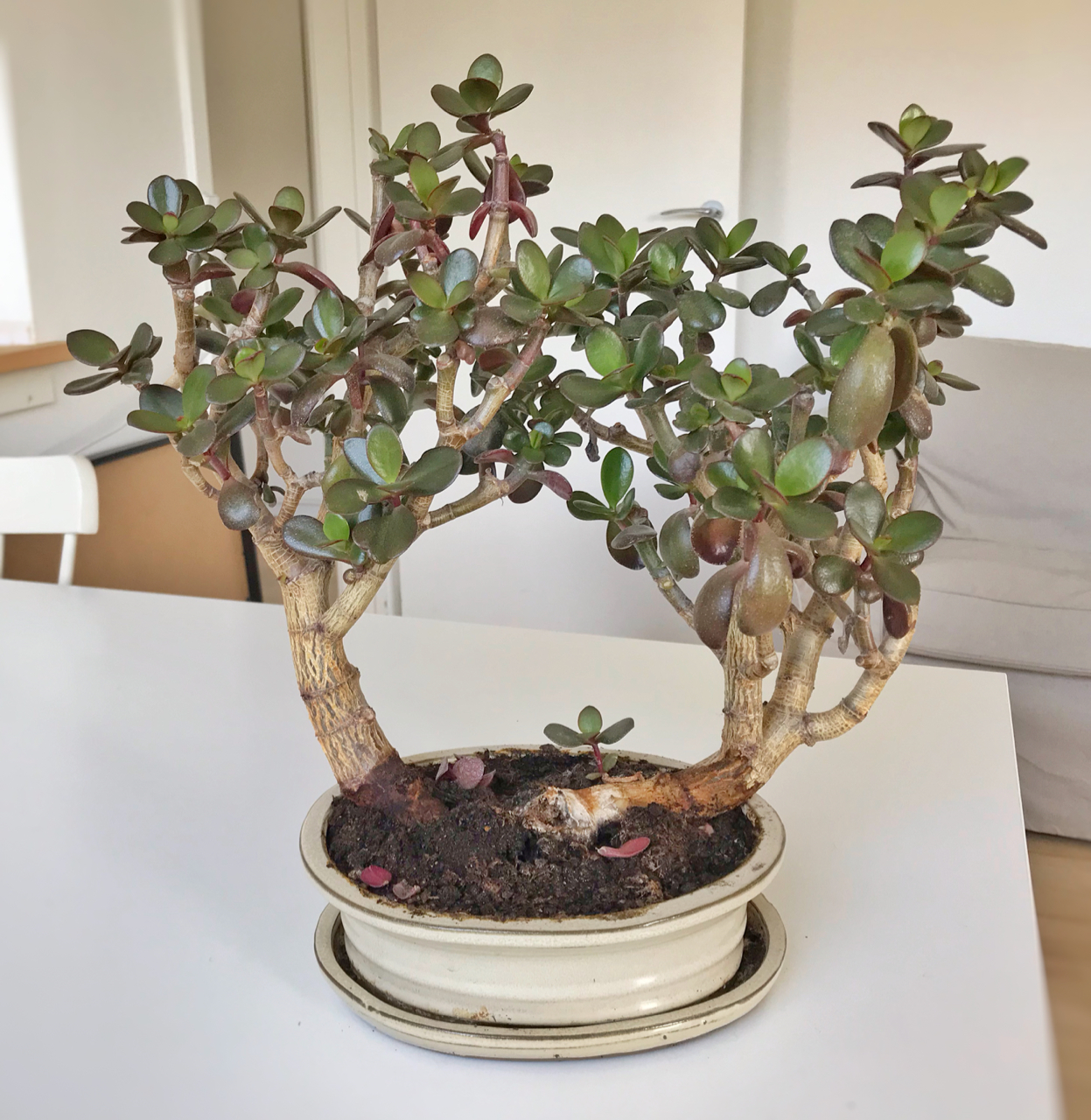 Then there is the jade plant, which originates from a cutting I snatched from the botanical gardens in Helsinki at the age of 19. When I intended to bring it over here to Denmark I discovered it had been forgotten for so long that the parched soil had shrunk from the pot edges, the wire holding the roots down had corroded and snapped, and the plant had capsized, lying sideways with its roots in the air. I apologized profusely, stuffed it into a bag and flew it to Copenhagen with me. Today it looks shaven on the sides because many leaves cracked off during the transport, and overgrown because I have focused on nursing it back to life before repotting and pruning. Life mangles us all up from time to time.
Then there is the jade plant, which originates from a cutting I snatched from the botanical gardens in Helsinki at the age of 19. When I intended to bring it over here to Denmark I discovered it had been forgotten for so long that the parched soil had shrunk from the pot edges, the wire holding the roots down had corroded and snapped, and the plant had capsized, lying sideways with its roots in the air. I apologized profusely, stuffed it into a bag and flew it to Copenhagen with me. Today it looks shaven on the sides because many leaves cracked off during the transport, and overgrown because I have focused on nursing it back to life before repotting and pruning. Life mangles us all up from time to time. (Copenhagen, Denmark; March 2020)
(Copenhagen, Denmark; March 2020) Poor daffodils, such uniquely beautiful flowers with so many negative connotations. Daffodils are also known as narcissus, and “narcissistic” is not a nice thing to be. Why these poor flowers have to suffer by association and name to the Greek myth of Narcissus, a vain man who was turned into a daffodil, is beyond me.
Poor daffodils, such uniquely beautiful flowers with so many negative connotations. Daffodils are also known as narcissus, and “narcissistic” is not a nice thing to be. Why these poor flowers have to suffer by association and name to the Greek myth of Narcissus, a vain man who was turned into a daffodil, is beyond me. To the buddhists, the lotus is a symbol of purity and transcendence: its feet bathe in the muddy bottom of the pond while its flowers and often leaves, too, rise into the pure air above it all. It is a reminder that one can have one’s roots entangled in mud and mess while still keeping a clear and pure mind above it all.
To the buddhists, the lotus is a symbol of purity and transcendence: its feet bathe in the muddy bottom of the pond while its flowers and often leaves, too, rise into the pure air above it all. It is a reminder that one can have one’s roots entangled in mud and mess while still keeping a clear and pure mind above it all. This year I have been following a personal development plan which revolves around identifying negative energy inside and around me. One of its action points is to repeat to myself when needed, “I am not my emotions”. I have found myself repeating this mantra over and over again these past few months. Another action point is to KonMari incoming energies, impressions, and matters: sort them at the door and not letting every single one in. And if needed, put the newcomers in separate rooms, close the doors, and deal with them later. I have found that my mental rooms are nearing overcrowded.
This year I have been following a personal development plan which revolves around identifying negative energy inside and around me. One of its action points is to repeat to myself when needed, “I am not my emotions”. I have found myself repeating this mantra over and over again these past few months. Another action point is to KonMari incoming energies, impressions, and matters: sort them at the door and not letting every single one in. And if needed, put the newcomers in separate rooms, close the doors, and deal with them later. I have found that my mental rooms are nearing overcrowded. Robin Sharma says that because a lifetime is precious and finite, there is no time for negative emotions. At all. That thinking a negative thought is to waste the time it takes to think that thought. This may sound like a highly platonically theoretic view, but when I think of all the time I spent dealing with negative emotions the past year I could probably amass a few weeks of life better spent doing other things. For example fully enjoying the botanical gardens of Bologna.
Robin Sharma says that because a lifetime is precious and finite, there is no time for negative emotions. At all. That thinking a negative thought is to waste the time it takes to think that thought. This may sound like a highly platonically theoretic view, but when I think of all the time I spent dealing with negative emotions the past year I could probably amass a few weeks of life better spent doing other things. For example fully enjoying the botanical gardens of Bologna. (Bologna, Italy; July 2019)
(Bologna, Italy; July 2019) This watermelon has nearly no seeds, a very thin rind, and barely any green flesh at the edges. Seedless watermelons exist – and who knows when one might run into an almost rindless watermelon in the grocery store?
This watermelon has nearly no seeds, a very thin rind, and barely any green flesh at the edges. Seedless watermelons exist – and who knows when one might run into an almost rindless watermelon in the grocery store?

 Spring in Helsinki means carpets of blue scilla. Someone must have started importing these plants from the Middle East and Caucasus, and now they claim their own space in every garden and park.
Spring in Helsinki means carpets of blue scilla. Someone must have started importing these plants from the Middle East and Caucasus, and now they claim their own space in every garden and park. Blueberries and bilberries are the same, right? Wrong. Blueberries found in our European supermarkets all-year round are cultivated highbush blueberries, juicy and light or green inside. The blue berries found in the Northern European forests are bilberries. These are the ones that stain your fingers and tongue when you eat them straight from the bush.
Blueberries and bilberries are the same, right? Wrong. Blueberries found in our European supermarkets all-year round are cultivated highbush blueberries, juicy and light or green inside. The blue berries found in the Northern European forests are bilberries. These are the ones that stain your fingers and tongue when you eat them straight from the bush.